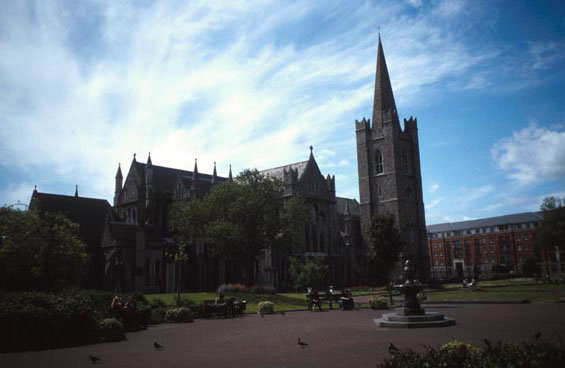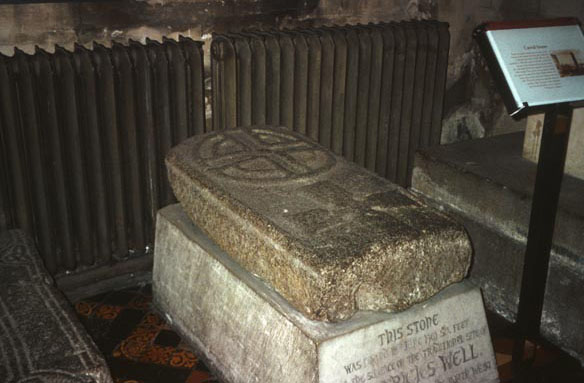
Saint Patrick
"There were many great saints among the Gael, but Patrick was the bush among them all."
--Blessed Patrick of the Bells, Lady Gregory (1906)
St. Patrick was a Briton, carried off to Ireland as a slave when he was sixteen years old. He eventually escaped Ireland and went to Gaul, where he studied and became a Bishop. He returned to Ireland in 432 and began one of the most astonishing missionary works in Church history. Until his death in 465, he traversed virtually the entire country, established multiple churches, appointed bishops and priests, and was the central figure in the peaceful conversion of Celtic Ireland to Christianity. His example of the shamrock as a symbol of the Holy Trinity is only one of many legendary feats he accomplished--along with the defeat of the Druids upon the Hill of Tara, or charming all the serpents out of Ireland. Even today, Patrick's legends and achievements still define the Irish countryside.

St. Patrick's Cathedral, Dublin. The largest church in Ireland, it was first built on the site of a sacred well where Patrick baptized converts around 450 A.D. The first stone cathedral was built in 1192; the current structure dates largely to the late 13th century, but was substantially restored in the 1860's (through funding by the Guinness Family).

Stone unearthed on the supposed site of St. Patrick's Well, discovered at the turn of the 20th century. The stone now sits in the west end of St. Patrick's Cathedral.